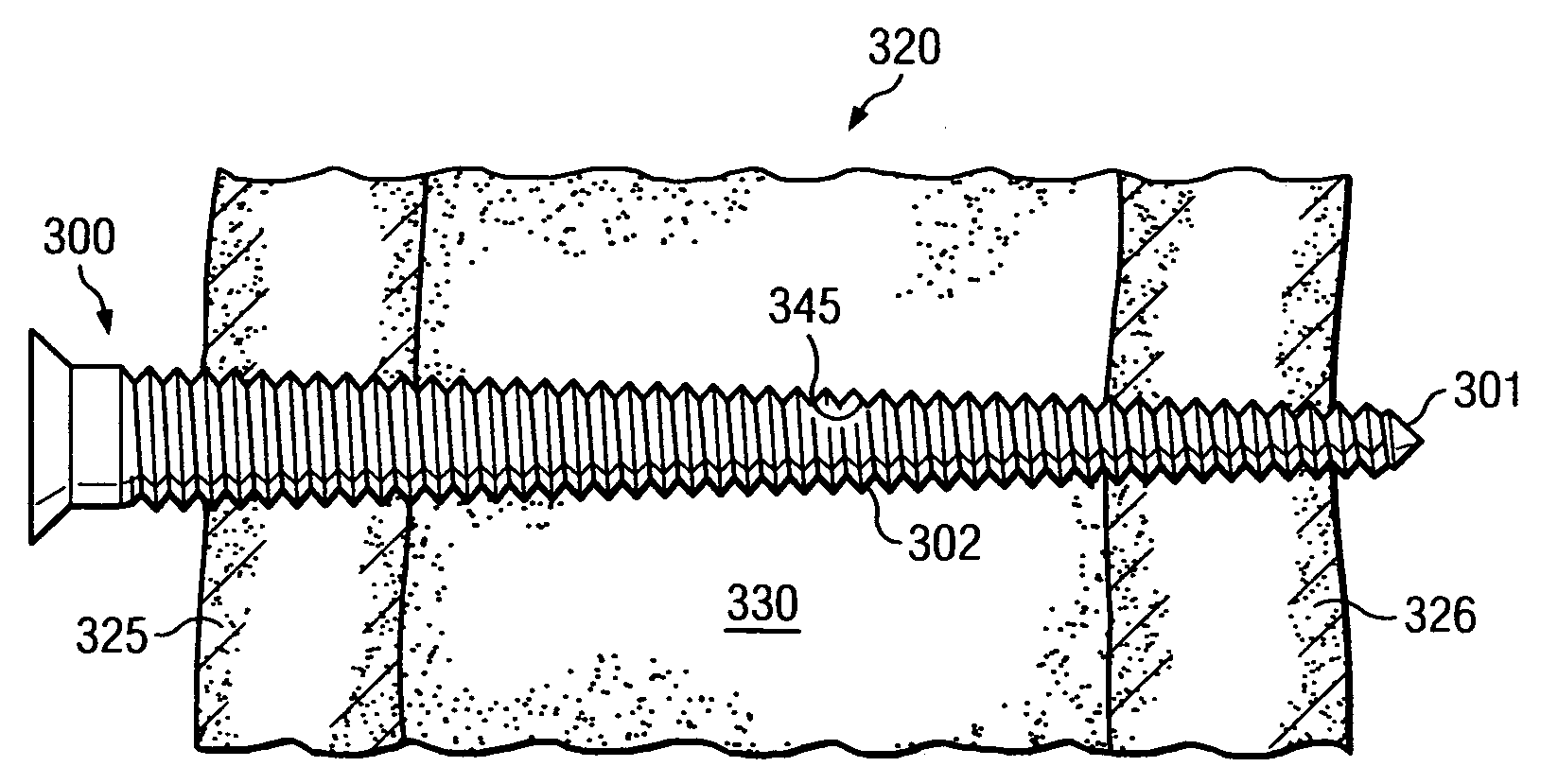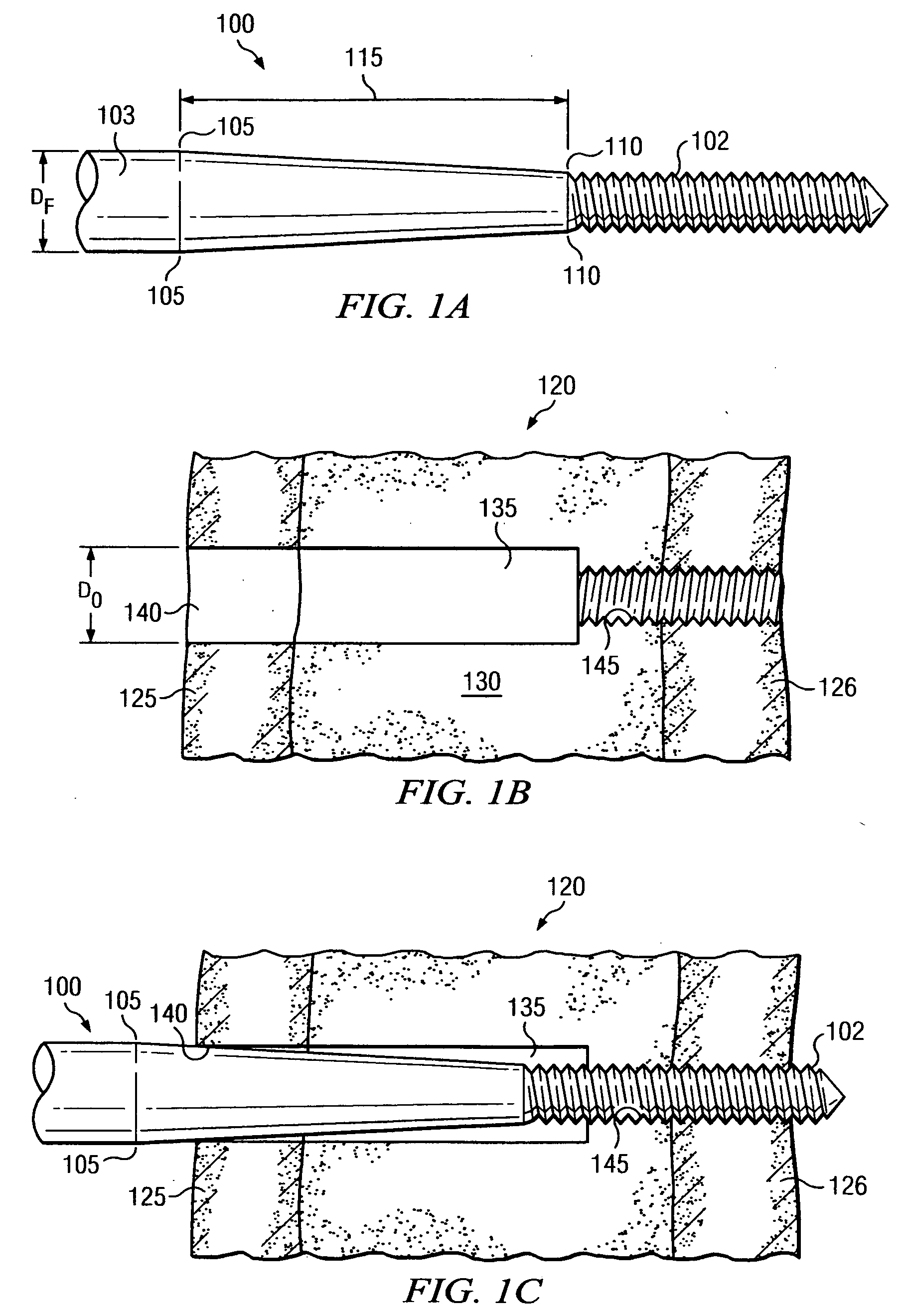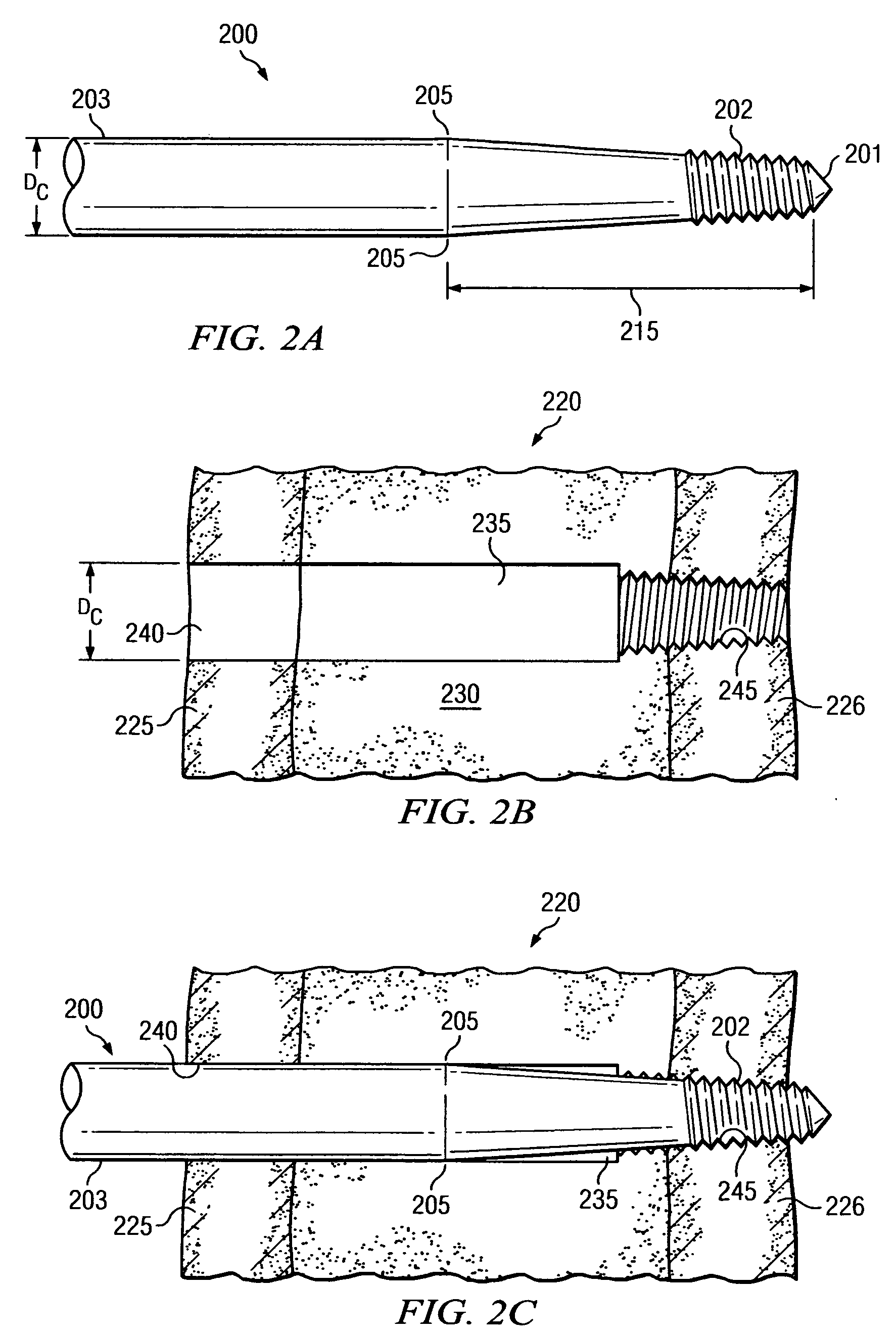Limiting radial preloads in securing an orthopedic fastener
a technology of limiting radial preload and securing an orthopedic fastener, which is applied in the field of orthopaedic fasteners, can solve the problems of micro-motion between the fastener and the bone, high stress conditions at the remaining contact area, and potential damage to the hole surrounding the bone hole, so as to avoid bone damage and be simple to manufactur
- Summary
- Abstract
- Description
- Claims
- Application Information
AI Technical Summary
Benefits of technology
Problems solved by technology
Method used
Image
Examples
Embodiment Construction
[0025]FIGS. 1A, 1B and 1C should be viewed together, and depict a first aspect of the present disclosure, in which an orthopedic fastener 100 is configured to limit and / or control radial preloads exerted in near cortex 125 as fastener 100 is operably secured into bone specimen 120. FIG. 1A illustrates a segment of fastener 100 in isolation. FIG. 1B illustrates bone specimen 120 with opening 135 prepared to receive fastener 100. FIG. 1C illustrates fastener 100 received into opening 135 and operably secured into bone specimen 120.
[0026]Referring first to FIG. 1A, fastener 100 provides threaded portion 102 on one end. Fastener 100 further provides unthreaded cylindrical portion 103 with a pre-selected constant diameter DF. Threaded portion 102 and cylindrical portion 103 are separated by a smooth tapered portion 115. Tapered portion 115 is bounded by reference points 105 and 110, as illustrated on FIG. 1A. Reference point 105 is the point at which cylindrical portion 103 ends and tape...
PUM
 Login to View More
Login to View More Abstract
Description
Claims
Application Information
 Login to View More
Login to View More - R&D
- Intellectual Property
- Life Sciences
- Materials
- Tech Scout
- Unparalleled Data Quality
- Higher Quality Content
- 60% Fewer Hallucinations
Browse by: Latest US Patents, China's latest patents, Technical Efficacy Thesaurus, Application Domain, Technology Topic, Popular Technical Reports.
© 2025 PatSnap. All rights reserved.Legal|Privacy policy|Modern Slavery Act Transparency Statement|Sitemap|About US| Contact US: help@patsnap.com



